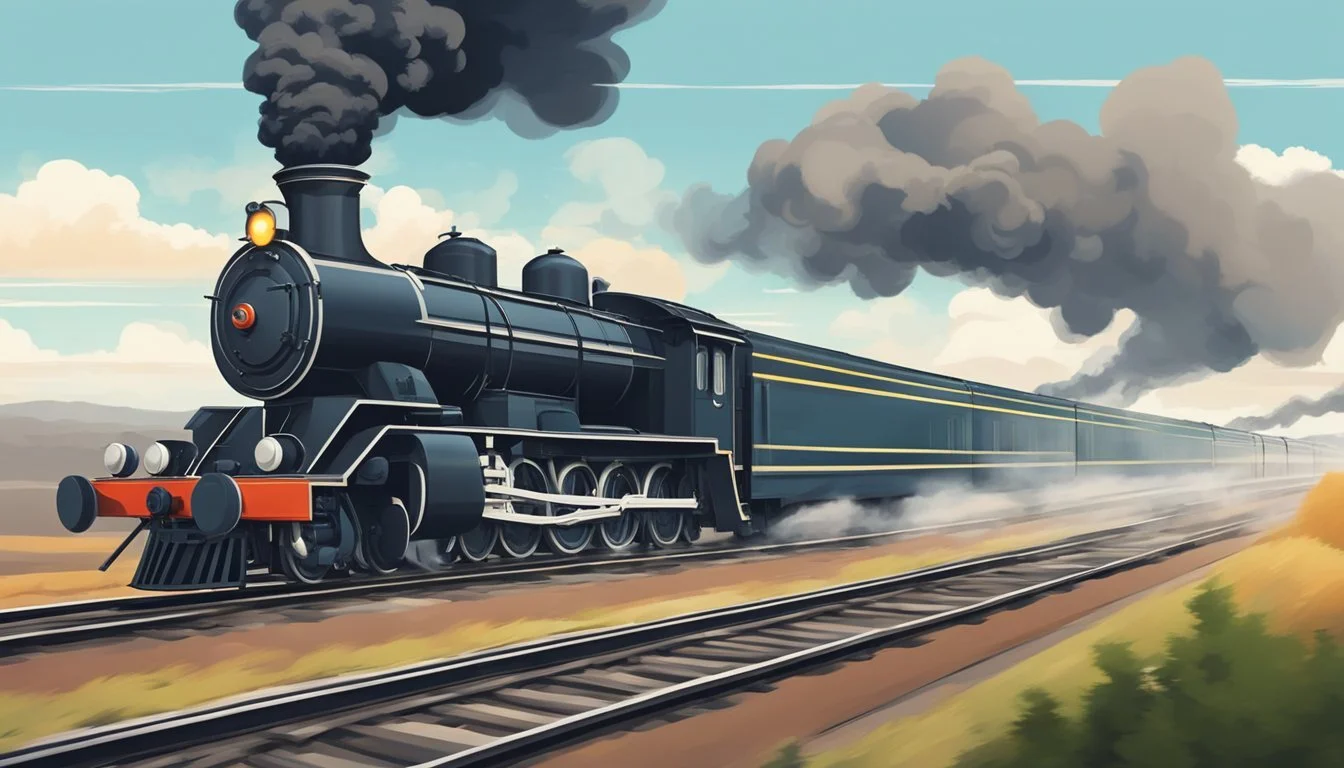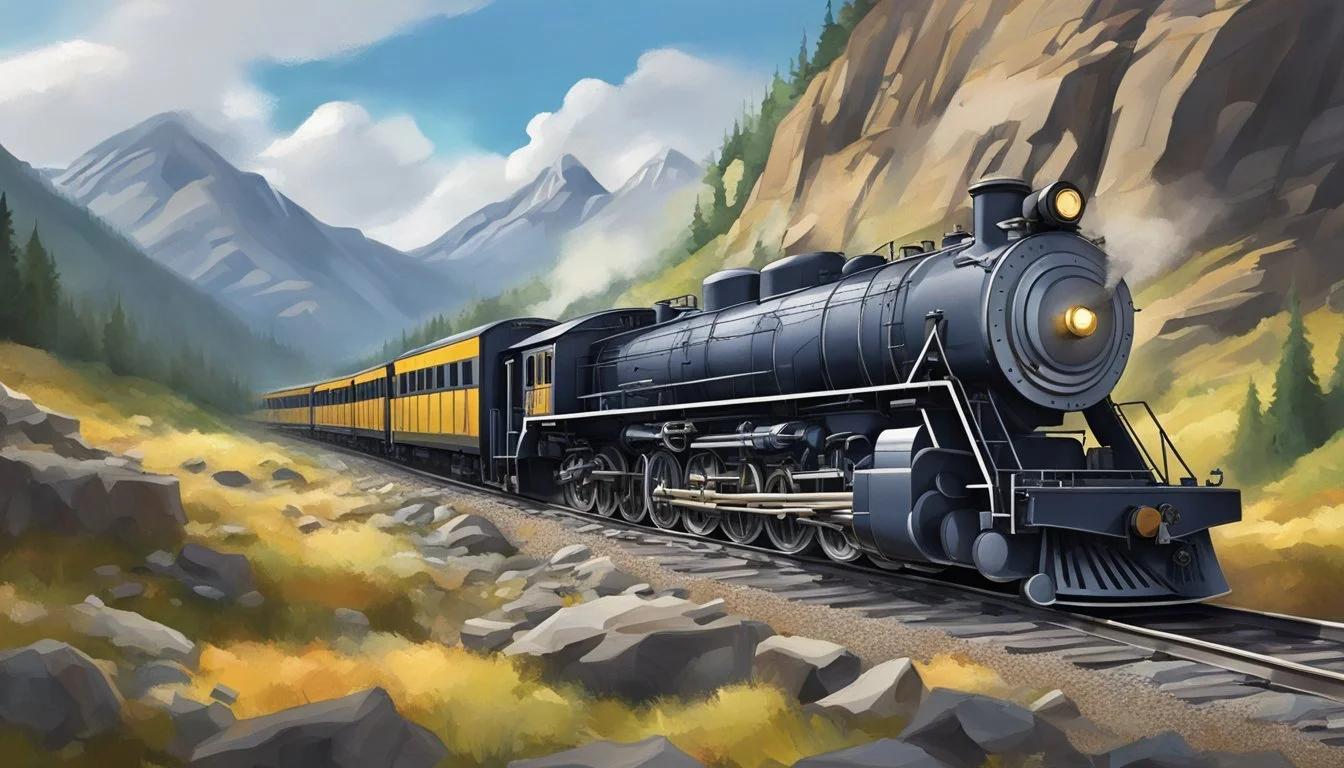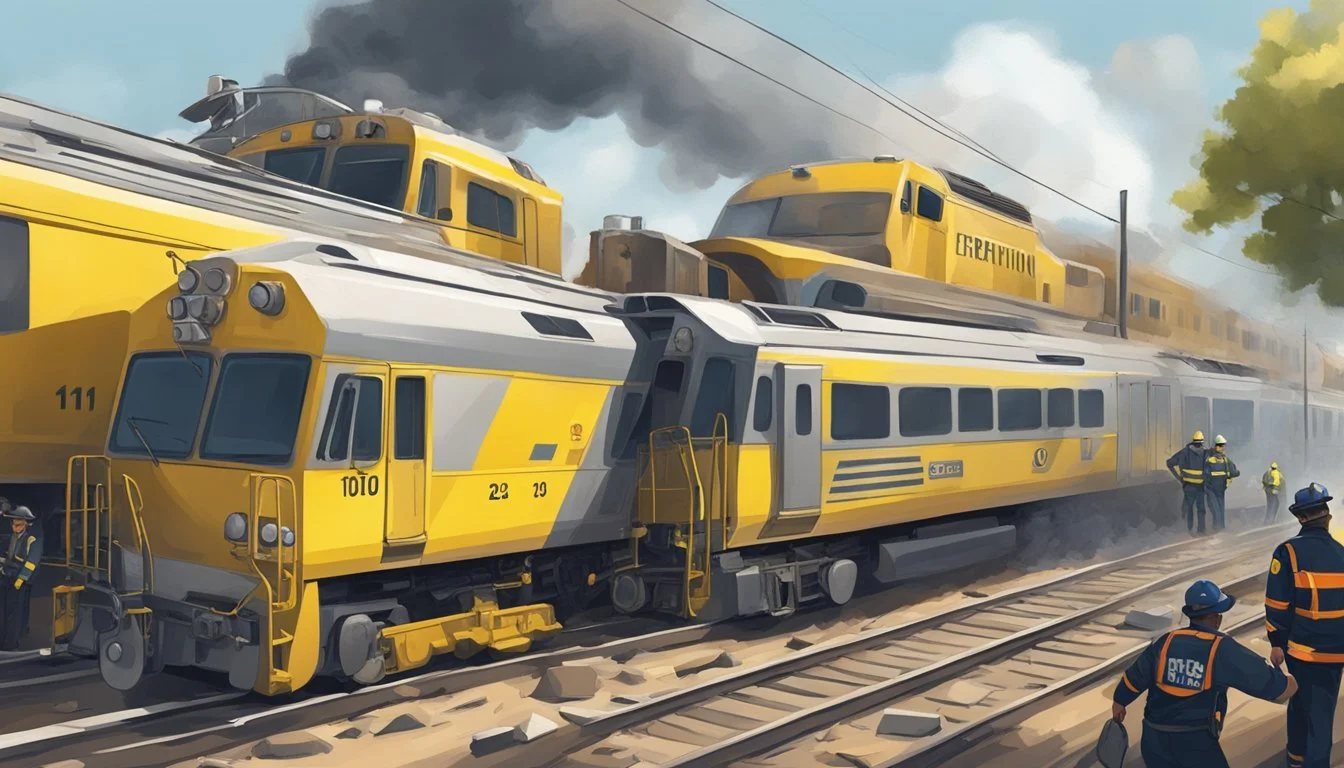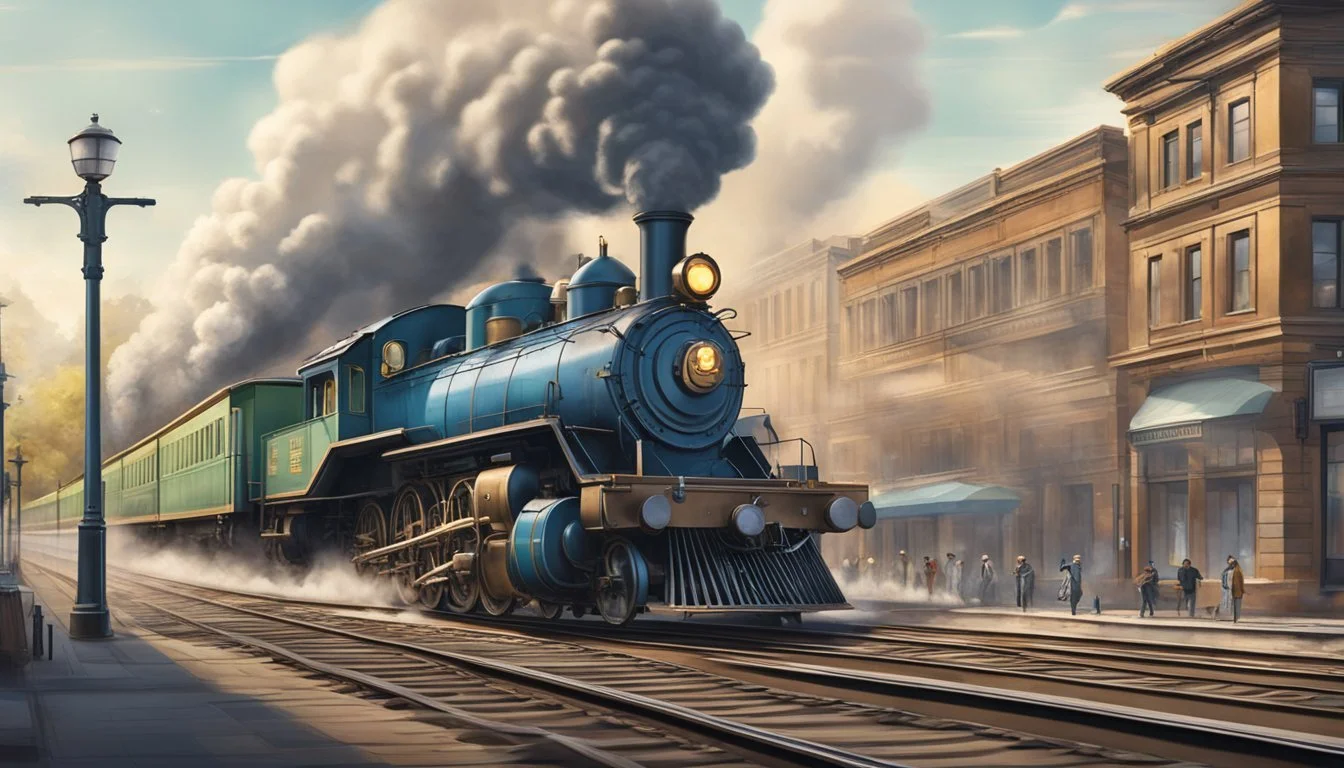Runaway Train: The Actual Incident That Inspired 'Unstoppable'
Real Events Behind the Hollywood Thriller
On May 15, 2001, a seemingly ordinary day in Walbridge, Ohio, took an extraordinary turn when a freight train began its unauthorized journey. CSX 8888, a locomotive pulling 47 cars, became a runaway train, sparking a real-life drama that would later inspire the Hollywood film "Unstoppable."
The incident unfolded when an engineer briefly stepped off the moving train to adjust a switch, inadvertently leaving the throttle open. As the unmanned train gathered speed, reaching up to 47 miles per hour, it traveled 66 miles through Ohio, endangering lives and property along its path. This harrowing event captured national attention and highlighted the potential dangers of railway operations.
Railway workers and local authorities scrambled to halt the runaway train's progress. Their efforts, including attempts to derail the locomotive and match its speed with another engine, ultimately led to a successful resolution. The dramatic true story provided rich source material for filmmakers, culminating in the 2010 movie "Unstoppable," starring Denzel Washington and Chris Pine.
The Real-Life Event Behind 'Unstoppable'
On May 15, 2001, an extraordinary incident unfolded in Ohio that would later inspire the film "Unstoppable". CSX locomotive 8888 became a runaway train, operating without an engineer for over two hours.
The event began in Walbridge, Ohio when railway employees noticed the train moving on its own. Unlike the movie's portrayal, the actual train reached speeds of only about 47 mph.
CSX 8888 traveled 66 miles through northwest Ohio carrying hazardous materials. This unmanned journey caused significant concern for public safety in the communities along its path.
Railway officials attempted several methods to stop the train, including using a derailer. These efforts proved unsuccessful, adding to the tension of the situation.
Eventually, a veteran engineer managed to board the moving train from a police vehicle. He successfully slowed and stopped the locomotive, averting potential disaster.
While "Unstoppable" dramatized many aspects of the incident, the core story of a runaway train and the efforts to stop it remained true to the real events.
CSX 8888: The Runaway Locomotive
On May 15, 2001, CSX locomotive 8888 became an unstoppable force, barreling through Ohio without a crew. This incident, known as the "Crazy Eights," sparked a dramatic chase to prevent potential disaster.
Events Leading to the Runaway
The saga began at Stanley Yard in Walbridge, Ohio. An engineer was moving the locomotive with 47 freight cars, including two carrying hazardous materials. He noticed a misaligned switch ahead and left the cab to fix it. However, he accidentally applied the throttle instead of the brake.
The train started moving. The engineer tried to reboard but fell. CSX 8888, now unmanned, accelerated. The locomotive's safety systems, including the dead man's switch, failed to engage.
The Path of CSX 8888
The runaway train traveled south from Toledo at speeds up to 47 mph. It passed through populated areas, including Kenton and Columbus. The train's path crossed busy roads and rail intersections.
CSX officials and local authorities scrambled to clear tracks and warn communities. The potential for derailment or collision with other trains loomed large. Each passing minute increased the risk of catastrophe.
Efforts to Stop the Train
Multiple attempts were made to halt CSX 8888:
Police tried shooting the fuel cut-off switch
A CSX engineer attempted to board from a high-speed truck
Derail devices were placed on the tracks
Finally, CSX trainmaster Jon Hosfeld successfully boarded the moving locomotive. He applied the air brake and brought the train to a stop near Kenton, Ohio. The ordeal lasted over two hours and covered 66 miles.
No injuries occurred, and no hazardous materials spilled. The incident later inspired the film "Unstoppable," highlighting the dangers of runaway trains and the bravery of those who intervene.
Unstoppable: The Hollywood Representation
The 2010 film "Unstoppable" brought the real-life CSX 8888 incident to the big screen. It transformed the runaway train story into a high-stakes action thriller, making some creative changes along the way.
Creation of the Film
Tony Scott directed "Unstoppable," with Mark Bomback penning the screenplay. 20th Century Fox produced and distributed the movie. Denzel Washington starred as Frank Barnes, a veteran engineer, while Chris Pine played Will Colson, a young conductor.
Rosario Dawson took on the role of Connie Hooper, a yardmaster trying to prevent disaster. The film's production aimed to capture the tension and urgency of the real event while adding Hollywood flair.
Scott's direction emphasized fast-paced action sequences and dramatic confrontations. The filmmakers used practical effects and real trains to enhance authenticity.
Differences from the True Story
While based on actual events, "Unstoppable" took creative liberties to heighten drama. The film compressed the timeline, making the incident more urgent than the real eight-hour ordeal.
Characters were fictionalized composites. In reality, no heroic engineer and conductor duo boarded the moving train. The movie added chase sequences and near-misses for excitement.
The film portrayed a more dangerous situation, with the train carrying hazardous materials and headed toward populated areas. This amplified the stakes compared to the actual incident.
"Unstoppable" also simplified complex railroad operations for audience understanding. It focused on the main characters' efforts rather than the broader coordination involved in the real event.
Thematic Elements and Cultural Impact
The runaway train incident sparked intense public interest and highlighted critical safety concerns in the rail industry. Media coverage amplified the dramatic nature of the event, shaping public perception and influencing industry practices.
Public Perception and Media Coverage
CNN and other major news outlets provided extensive coverage of the runaway train incident. The dramatic nature of a locomotive carrying hazardous chemicals speeding uncontrolled captured widespread attention. Many viewers were shocked to learn such an event could occur in modern times.
Public interest surged as the story unfolded, with people glued to live updates. The potential for catastrophic damage if the train had derailed in a populated area fueled concerns about rail safety. Social media buzzed with discussions about the bravery of the railroad workers who ultimately stopped the train.
Influence on Rail Industry Practices
The incident prompted a critical examination of safety protocols within the rail industry. Railroad companies faced pressure to implement more robust measures to prevent similar occurrences. Many revised their training programs, emphasizing proper securement of trains and emergency response procedures.
New technologies were developed and adopted to enhance train monitoring and control systems. Some companies installed automatic brake systems designed to stop runaway trains. The incident also led to increased regulatory scrutiny, with safety audits becoming more frequent and thorough.
Railroad workers saw changes in their daily routines, with stricter adherence to safety checklists and procedures. The industry as a whole became more vigilant about potential risks associated with transporting hazardous materials by rail.
Technical Aspects of Railroad Operations
Railroad operations involve complex machinery and safety systems designed to ensure efficient and secure transportation. These elements work together to control train movement and prevent accidents.
Mechanics of Locomotives
Modern locomotives like the EMD SD40-2 are powerful machines capable of pulling massive loads. The engineer controls the locomotive's speed using the throttle, which regulates fuel flow to the engine. Locomotives utilize two main braking systems: air brakes and dynamic brakes. Air brakes use compressed air to apply friction to the wheels, while dynamic brakes convert the locomotive's kinetic energy into electrical energy, slowing the train.
The conductor assists the engineer and oversees train operations. They communicate with dispatch and ensure proper cargo loading and unloading.
Railroad Safety Mechanisms
Safety is paramount in railroad operations. Air brake systems extend throughout the entire train, allowing for synchronized braking of all cars. The dead man's switch is a crucial safety feature that automatically applies brakes if the engineer becomes incapacitated.
Trains are equipped with various warning systems and sensors to detect track obstructions, excessive speed, and mechanical issues. These systems can automatically apply brakes or alert the crew to potential dangers.
Regular maintenance and inspections are essential to keep locomotives and railcars in optimal condition. This includes checking brakes, wheels, and coupling systems to prevent equipment failures during operation.
The Aftermath and Safety Regulations
The CSX 8888 incident prompted significant changes in railroad safety protocols and left a lasting impact on the industry. New measures were implemented to prevent similar occurrences and improve overall operational security.
Changes in Protocols
CSX Transportation swiftly revised its safety procedures following the runaway train incident. The company mandated that engineers must set hand brakes before exiting locomotives. Automatic braking systems were upgraded to activate if a train moves while unattended. Dispatchers received enhanced training to respond more effectively to potential runaways.
The Federal Railroad Administration (FRA) also took action. They issued new guidelines requiring railroads to implement stricter policies for securing unattended equipment. These regulations included specific brake requirements and procedures for monitoring stationary trains.
Legacy of the CSX 8888 Incident
The CSX 8888 event became a case study in railroad safety. It highlighted the importance of fail-safe mechanisms and proper crew training. Many rail companies across the United States reviewed and strengthened their own safety measures in response.
The incident also raised public awareness about the potential dangers of freight rail operations. It led to increased scrutiny of railroad practices and sparked discussions about the need for ongoing safety improvements in the industry.
Today, the CSX 8888 runaway serves as a reminder of the critical importance of rigorous safety protocols in rail transportation. Its legacy continues to influence safety training programs and regulatory decisions in the railroad sector.
Box Office and Reception
"Unstoppable" hit theaters in November 2010, starring Denzel Washington and Chris Pine. The film opened to a solid $22.7 million in its first weekend, landing in second place at the box office.
Over its theatrical run, "Unstoppable" grossed $81.6 million domestically and $167.8 million worldwide. This performance was considered a moderate success against its $100 million production budget.
Critics generally responded positively to the film. It earned a 86% "Fresh" rating on Rotten Tomatoes, with many praising its intense action sequences and strong performances from the lead actors.
The film's realistic portrayal of railway operations and the tension-filled plot resonated with audiences. Washington and Pine received credit for their chemistry and believable portrayals of the heroic train crew.
"Unstoppable" earned an Academy Award nomination for Best Sound Editing, recognizing the film's impressive audio work in creating a thrilling atmosphere. While it didn't win, the nomination highlighted the technical prowess of the production team.




